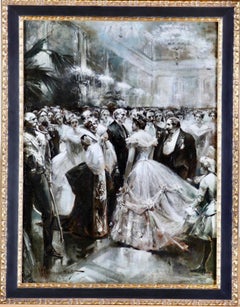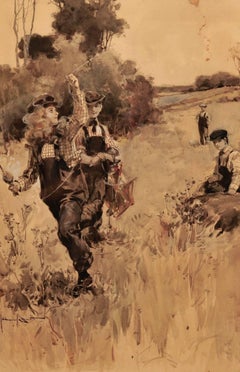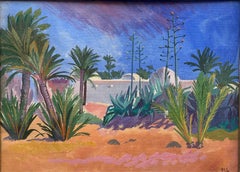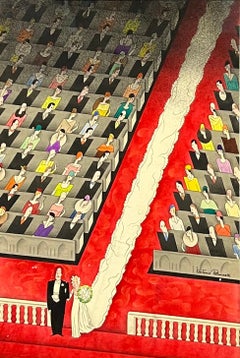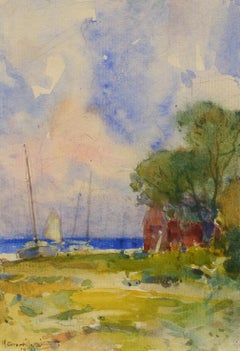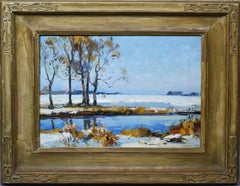Walter Granville-Smith Art
Walter Granville-Smith, reportedly produced the first color illustration in America, which appeared in Godey's Lady Magazine, in conjunction with a story entitled The Christmas Witch, by Gertrude Atherton. Others of his illustrations appeared in such publications as Harper's, Scribner's, Truth and Collier's. The most popular of these subjects were women depicted in either interior or out-of-door scenes. Granville-Smith, however, counted success in more than simply illustration. Winning numerous prizes from such institutions as the National Academy of Design, the Carnegie Institute, the American Water Color Society and the Salmagundi Club, of which he was a member, Granville-Smith was propelled to popularity. He worked in oil, watercolor, etching and combinations of the three, strengthening his skills and talent under the tutelage of such artists as Walter Satterlee, J. Carroll Beckwith and Willard Metcalf, both at the Art Students League of New York and abroad. Granville-Smith's exhibition record is phenomenal: at the Boston Art Club (1898–1909), 50 years at the National Academy of Design (1890–1940), at the Pennsylvania Academy (1904–28), at the Art Institute of Chicago (1896–1925), at the Corcoran biennials (1907–37) and at the Carnegie International (1905–31). Although Granville-Smith spent his wanderjahre in Europe, where he more firmly integrated the impressionistic aesthetic into his art, some of these works simply represent well-executed examples of high-keyed Tonalism. In works dating circa 1910, Granville-Smith demonstrated a near-analytical observation of nature, as well as a mastery of technique. In these paintings, the artist appears to be turning from illustration to pure easel painting, toward a subjective lyricism comparable to that of John H. Twachtman. Throughout his work, Granville-Smith incorporated the methods of plein-air study. In so doing, he demonstrated one of the fundamental pursuits of impressionism: a keen sense of natural light and atmospheric changes. He was a member of the National Academy and continually active in the New York area art Community. He died on 7 December 1938.
Early 20th Century Walter Granville-Smith Art
Oil
Early 20th Century Walter Granville-Smith Art
Watercolor, Board
Early 20th Century Fauvist Walter Granville-Smith Art
Paper, Watercolor, Gouache, Cardboard
1930s American Realist Walter Granville-Smith Art
Gouache, Board
20th Century Modern Walter Granville-Smith Art
Gouache, Board
1940s American Realist Walter Granville-Smith Art
Canvas, Oil
1950s Post-Impressionist Walter Granville-Smith Art
Oil, Masonite
2010s Walter Granville-Smith Art
Canvas, Oil
1950s Modern Walter Granville-Smith Art
Watercolor, Gouache, Board
1940s Art Deco Walter Granville-Smith Art
Watercolor, Gouache, Illustration Board
1920s Walter Granville-Smith Art
Canvas, Oil
1910s Walter Granville-Smith Art
Canvas, Oil
1910s Other Art Style Walter Granville-Smith Art
Canvas, Masonite, Oil
1920s Surrealist Walter Granville-Smith Art
Watercolor, Gouache, Illustration Board
Early 20th Century Impressionist Walter Granville-Smith Art
Watercolor
Early 1900s Impressionist Walter Granville-Smith Art
Canvas, Oil
Early 20th Century American Walter Granville-Smith Art
Canvas
